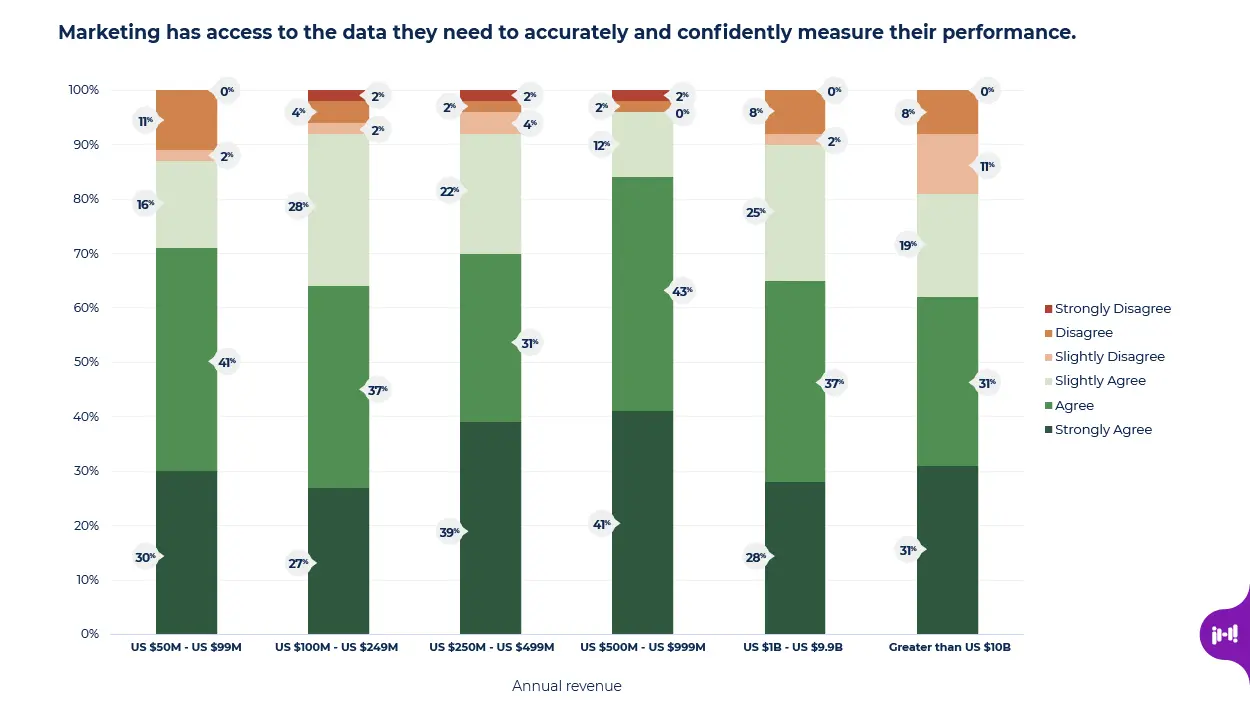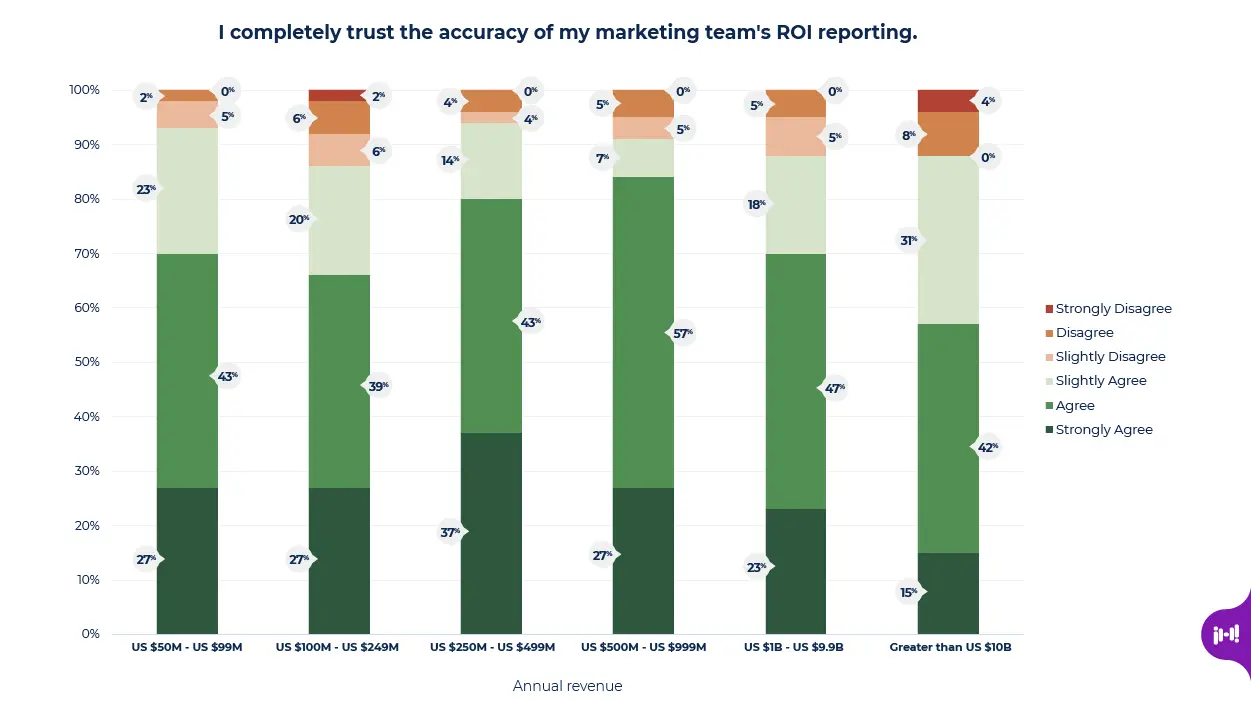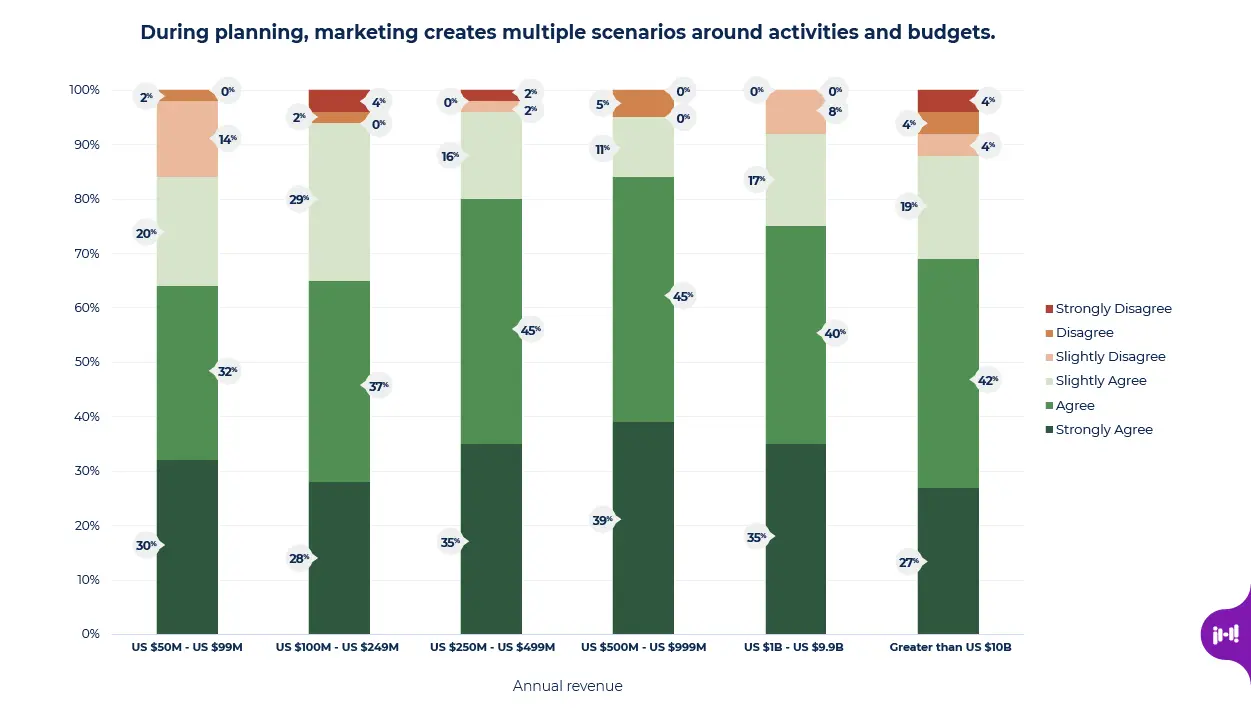Blog

When I think of companies, I think of them as ships on the sea. I think of dinghies, clipper ships, and barges.

In our recent benchmark survey, conducted jointly with Allocadia, we found that marketing teams of clipper ship size (organizations of $250 to $1B in revenue) demonstrate the highest level of performance in marketing planning, budgeting, and reporting as compared to smaller and larger organizations. From the survey results, we were able to quantify for the first time what we had previously observed but did not have data to prove.
Below, out of the dozens of charts we analyzed, are three that display the impact of organizational size on the effectiveness of the marketing team with respect to planning, budgeting, and reporting.
Marketing data access.

76% of marketing teams in the midmarket category strongly agree that they have access to the data they need to accurately and confidently measure their performance.
Organizations in other revenue bands were not only less likely to strongly agree with this statement but were more likely to strongly disagree with it.
Trust in marketing data.

Marketing teams in midmarket organizations demonstrate a higher level of trust in their ROI reporting as compared to their peers.
Only 57% of organizations with revenue greater than $10B and 70% of organizations in the $50-99M range indicated they completely trust their team’s ROI reporting. 82% of marketing teams in the midmarket range have this level of trust.
Marketing scenario planning.

82% of marketing teams supporting midmarket organizations agree that they create multiple scenarios around activities and budgets. Marketing teams supporting larger or smaller organizations were less likely to agree.
How does organization size impact marketing budgeting, planning, and reporting?
As with ships, an organization’s maneuverability is an important factor when it comes to implementing marketing budgeting, planning, and reporting best practices. The effects of those practices on the bottom line depend largely on the amount of cargo they can hold (volume of opportunities).
- Small (<$250M in revenue). Marketing teams in smaller organizations can make adjustments and gain approvals rapidly. However, their use of automation is limited, and they face resourcing constraints, especially when it comes to specialized areas of expertise. Though they can quickly adopt enhancements to current processes, these changes often do not result in significant increases in revenue, given the organization’s limited lead flow and revenue size.
- Medium ($250M to $1B in revenue). Compared to marketing teams at smaller organizations, these teams tend to have more staff and the ability to onboard specialized skill sets. They also invest more in technology and their technology investments tend to be more unified, rather than treated as separate applications. Unlike their counterparts at larger organizations, they tend to have less complexity and face less red tape, which enables them to pursue process changes that diverge from “the way things currently work” and implement these changes faster. And, they are large enough for these process changes to have a noticeable positive impact on overall revenue.
- Large (>$1B in revenue). Marketing teams in larger enterprises tend to have significant levels of technology and a bench of specialized expertise. However, given the size and complexity of the organization (multiple systems, manual processes, the impact of mergers and acquisitions) they are often unable to make big changes rapidly. Nonetheless, they have the benefit of scale, so even incremental process improvement can drive significant top-line revenue impact.
The Iron Horse insight.
Company size is not the determining factor in how effective a marketing team is in planning, budgeting, and reporting. However, the data indicates that organizational size influences the relative ease of doing so. Does this mean that only marketing teams supporting midmarket companies should be expected to drive excellence in planning, budgeting, and reporting? Absolutely not! Rather it highlights that larger organizations will see greater benefits if they can introduce speed and flexibility into their change adoption process. Smaller organizations, on the other hand, should understand that resource constraints may be holding them back in more ways than they realized.
Subscribe to our blog.
Get unstuck with the most interesting business ideas and our insights delivered to your inbox.